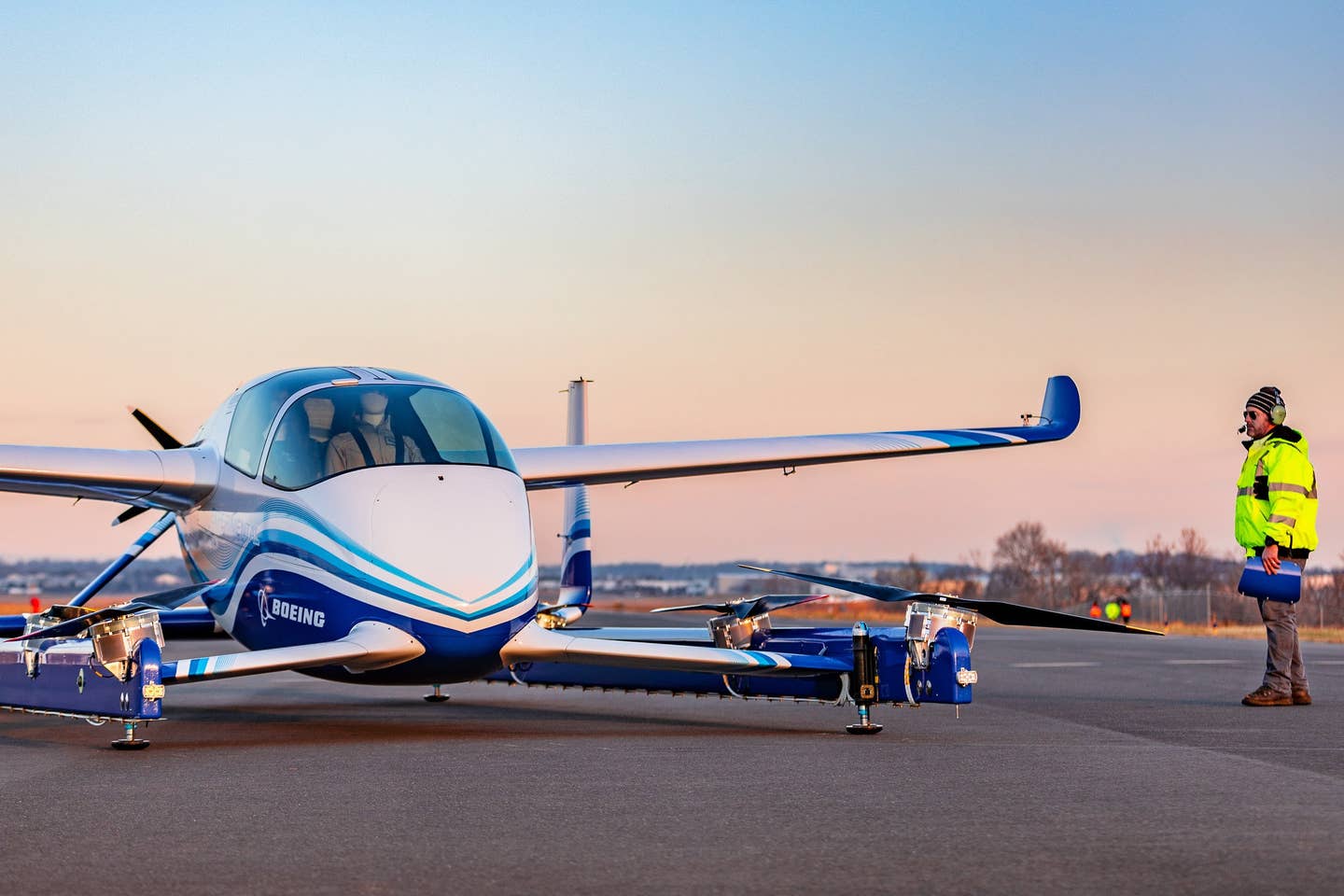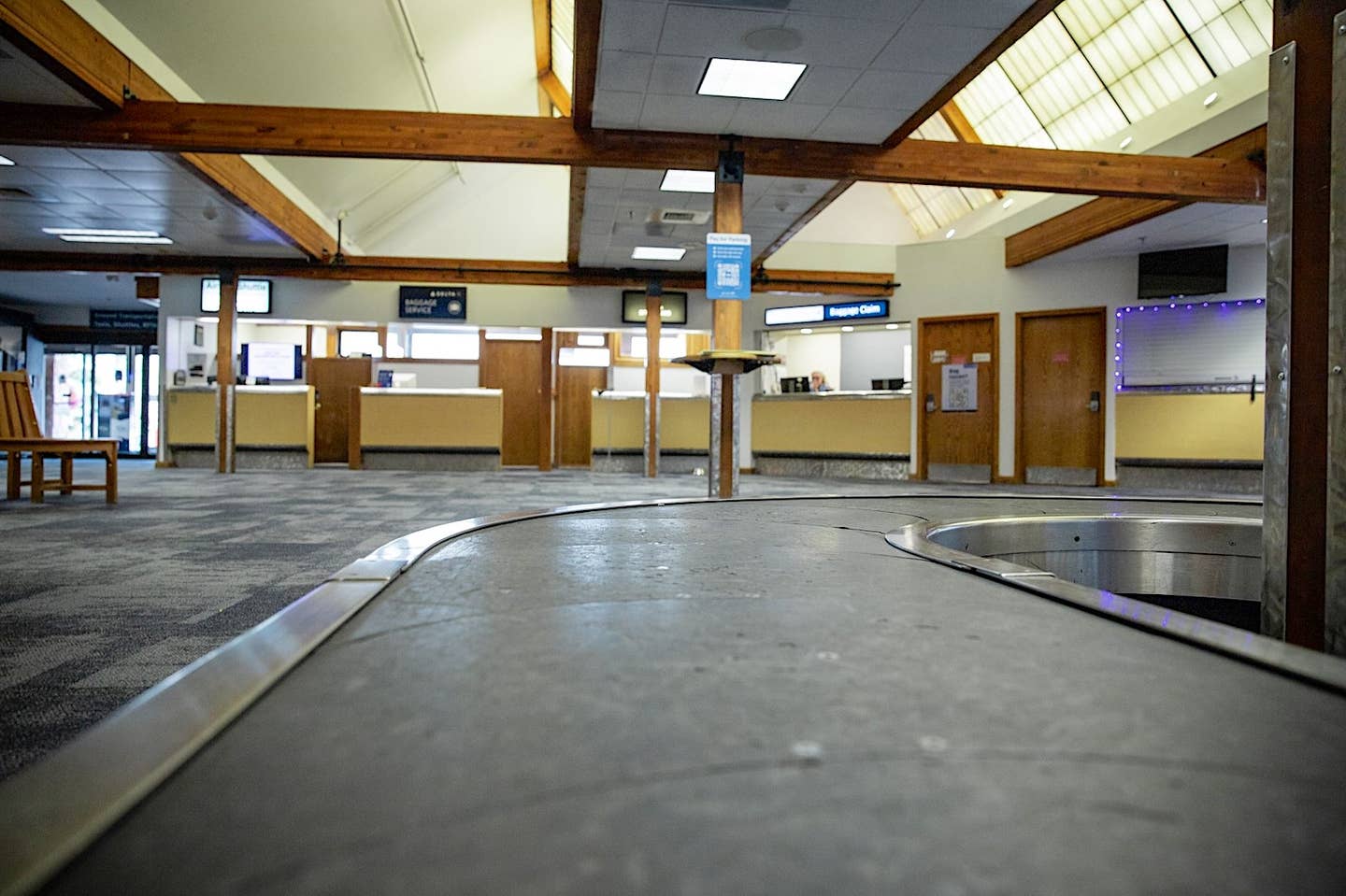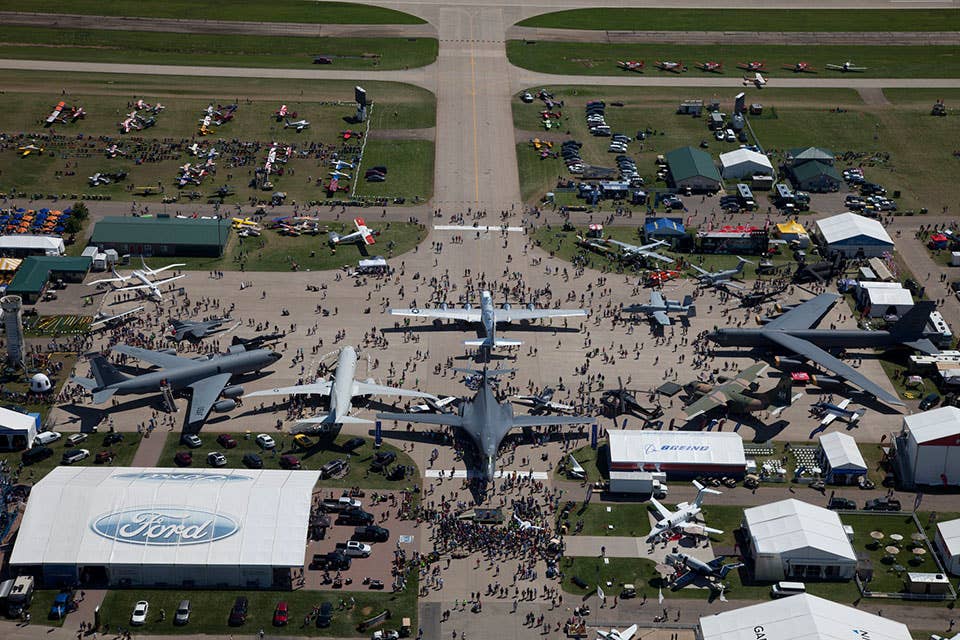Boeing Autonomous eVTOL Makes First Flight
Boeings autonomous air taxi prototype successfully completed its first test flight on Tuesday in Manassas, Virginia. According to the company, the electric vertical takeoff and landing (eVTOL) aircraft-which it calls a passenger air vehicle (PAV)-completed a controlled takeoff, hover and landing.

Image: Boeing
Image: Boeing
Boeing's autonomous air taxi prototype successfully completed its first test flight on Tuesday in Manassas, Virginia. According to the company, the electric vertical takeoff and landing (eVTOL) aircraft—which it calls a passenger air vehicle (PAV)—completed a controlled takeoff, hover and landing. The brief flight was designed to test the PAV's autonomous functions and ground control systems.
"In one year, we have progressed from a conceptual design to a flying prototype," said Boeing Chief Technology Officer Greg Hyslop. "Boeing's expertise and innovation have been critical in developing aviation as the world's safest and most efficient form of transportation, and we will continue to lead with a safe, innovative and responsible approach to new mobility solutions."
The PAV was designed and developed by Boeing subsidiary Aurora Flight Sciences as part of Boeing NeXt, a division of the company that focuses on urban air mobility research and development. Boeing says that future PAV flights will test forward, wing-borne flight, and the transition phase between vertical and forward-flight modes. The PAV prototype is 30 feet long with a 28-foot wingspan and has a range of approximately 43 NM (80.47 kilometers).
Boeing's project joins other autonomous air taxi prototypes making test flights including Airbus' Vahana, which flew for the first time in January 2018, and the Volocopter 2X. The 2x completed its first public unmanned test flight in Dubai in September 2017 and the company is currently preparing for an urban flight test program in Singapore. Also on the list is the Ehang 184, which has been carrying passengers on manned test flights for at least a year.






